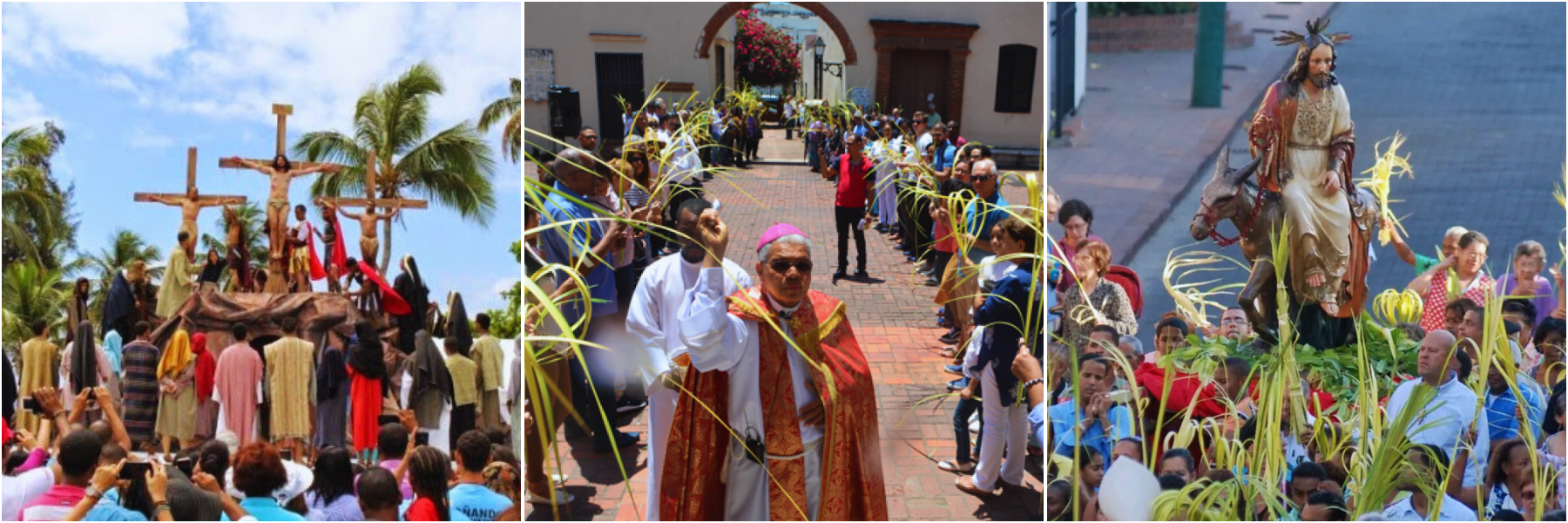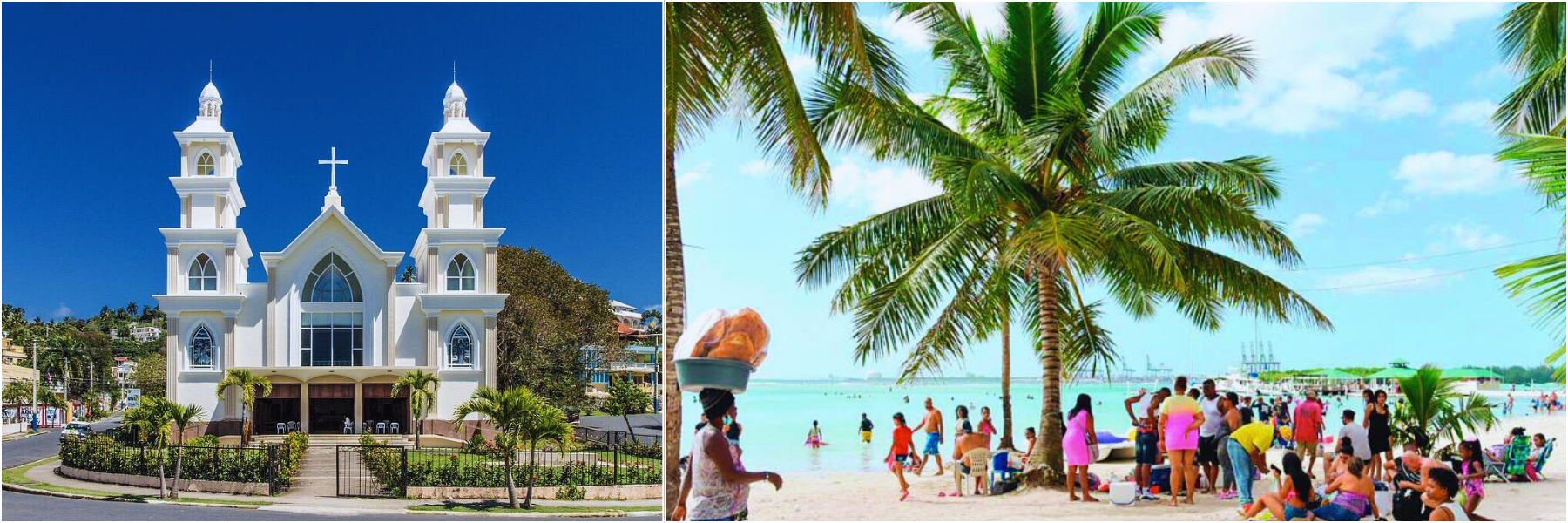Semana Santa in Samaná: A Deep Dive into Holy Week Traditions
Semana Santa, or Holy Week, is one of the most important religious and cultural events in the Dominican Republic. While it is marked by solemn rituals across the country, it also doubles as a major holiday period filled with family gatherings, traditional foods, and beach outings. In Samaná, this contrast is especially vivid. Here, we explore how Holy Week is observed in the DR – with a special look at the unique blend of devotion and celebration that defines the Samaná Peninsula.

National Observances: Faith, Reflection, and Family Time
Across the Dominican Republic, Semana Santa begins with Palm Sunday and continues through Easter Sunday. It is a deeply Catholic period, focused on the passion, death, and resurrection of Christ. Churches organize numerous liturgies and processions: from the Chrism Mass and the foot-washing on Holy Thursday to Good Friday’s Via Crucis, often re-enacted in the streets with crosses and icons.
Good Friday remains the most solemn day. Commercial activity pauses, and by law, music and alcohol are banned for 24 hours. Many Dominicans fast or abstain from meat, dedicating the day to prayer and quiet.
Yet, the week is also a national vacation. Schools and most workplaces close from midweek onward, giving families time to travel, gather, or rest. Popular destinations such as Samaná, Puerto Plata, and La Romana see a surge in both local and international visitors.
Unlike in other countries, Easter Monday is not celebrated in the Dominican Republic, and there is no tradition of the Easter Bunny or egg hunts. However, due to globalization, this is gradually changing, and in some places, people have started organizing egg hunts, especially for children.
Culinary Traditions of Semana Santa
Food plays a central role during Holy Week, especially in the absence of red meat. Dishes focus on fish and vegetables, with bacalao con papas (salted cod with potatoes) among the most iconic.
Another standout is habichuelas con dulce – a spiced dessert made from red beans, coconut milk, sugar, cinnamon, star anise, cloves and others aromatics; decorated with round cookies with a small cross at the top. Prepared in large quantities and shared among neighbors, it’s a symbol of Dominican hospitality during the season. Fun fact, many foreigners say this dessert tastes like “chocolate soup”. Other traditional offerings include moro de guandules con coco, eggplant stews, and buñuelos de yuca (syrup-coated tapioca fritters).

Semana Santa in Samaná: Tradition Meets Tourism
The Samaná Peninsula is a microcosm of Semana Santa in the DR. On one side, it’s home to tight-knit, faith-based communities. Churches in towns like Santa Bárbara de Samaná and Las Terrenas organize processions, vigils, and services that draw significant local participation.
On Good Friday, the streets of Santa Bárbara see a live Via Crucis with parishioners reenacting the Passion of Christ. Symbols of devotion – palm crosses on doors (usually using the leaves from Palm Sunday), modest dress, and a general quiet – are visible throughout the region.
At the same time, Samaná is one of the country’s top destinations during Holy Week. Families from across the country come to enjoy its beaches, waterfalls, and national parks.
While massive beach parties have been banned in recent years for safety reasons, informal gatherings, boat trips, and beach picnics continue. Las Terrenas, Las Galeras, and Playa Rincón are especially popular. Music and alcohol return on Holy Saturday and Easter Sunday, shifting the mood from reflection to relaxation.

A Community Spirit
Despite the tourist influx, local customs remain strong. Families clean their homes before the holy days, shop early to avoid crowds, and prepare traditional meals. Children often deliver bowls of habichuelas con dulce to neighbors – a simple but heartfelt gesture. Churches remain central gathering points, and even visitors are welcome to join Mass or community events.
Local authorities and volunteer groups also play a role. Emergency services coordinate beach safety and crowd control, and there are community clean-ups after the holiday weekend. The goal is to ensure that Semana Santa is both meaningful and safe for all.
Why Easter in Samaná Is Worth Experiencing
Semana Santa in the Dominican Republic offers a rare blend of religious depth and cultural richness. In Samaná, this blend is especially vivid: morning Masses and processions give way to afternoons at the beach; traditional foods are served alongside a warm welcome for travelers.
For those looking to understand Dominican life beyond the resorts, Holy Week in Samaná offers a genuine, multidimensional experience. It is a time of reverence, reflection, and celebration – all set against the backdrop of one of the country’s most beautiful coastal regions.